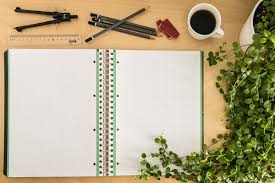
Taking good notes is one of the most important skills any student can master. Great notes help you remember lessons, prepare for exams, and even develop stronger critical thinking. But many students struggle to organize and retain information effectively. Here are five proven note-taking strategies to help you study smarter.
1️⃣ The Cornell Method
The Cornell Method is a powerful and structured way to organize your notes. Divide your page into three sections:
- Cue Column (left): write down key terms or questions
- Notes Section (right): record detailed class notes
- Summary Section (bottom): summarize the main points after class
This method encourages you to actively process and review what you learned, rather than just copying everything word-for-word.
2️⃣ Mind Mapping
Mind mapping is a visual way to organize ideas. Start with a central topic in the middle of your page, then draw branches for related ideas and subtopics.
This helps you see connections between ideas quickly, which is perfect for subjects with lots of interlinked concepts, like history or science.
3️⃣ Color Coding
Color coding is simple but powerful. Use different colored pens or highlighters to mark:
- Key points
- Definitions
- Examples
- Questions
This makes it easier to scan through your notes later and quickly find what you need. It also helps your brain group information visually, which improves memory.
4️⃣ Summarizing in Your Own Words
Instead of copying notes word-for-word, rewrite what you’ve learned in your own words. Summarizing forces you to process and understand the information, making it more likely you’ll remember it.
For example, after a science lesson, try explaining a concept to yourself like you’re teaching a friend. That’s a great way to check if you truly understand it.
5️⃣ The Outline Method
This is a classic style of note-taking, where you organize information in a hierarchical bullet list with headings and subheadings. For example:
- Main topic
- Supporting detail
- Example
- Supporting detail
This method is great for subjects with a clear, logical structure, like geography or biology.
Final Thoughts
Strong note-taking habits can transform the way you learn, making study time more effective and less stressful. Try experimenting with these methods — Cornell, mind mapping, color coding, summarizing, and outlining — to see what works best for you.
Remember, notes aren’t just for the moment you write them. They’re a powerful tool to review, reflect, and grow as a learner.
